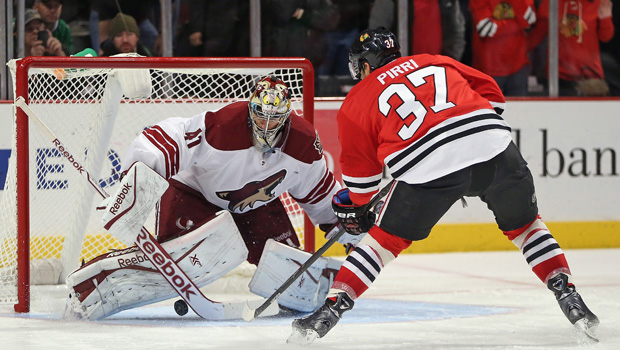The very last tied game in NHL history was played between the Carolina Hurricanes and the Florida Panthers on April 4, 2004. It was anything but slow. The Hurricanes took an impressive 4-0 lead in the first period before allowing six unanswered goals to start out the third. Carolina recovered when Eric Staal and Brad Fast—in their first and last NHL games, respectively—tied up the score. When the regulation clock expired, the official scorer entered 6-6 in the books, and the crowd shuffled out of the stands.
Excitement nonwithstanding, the final score of this game would probably be incredibly unsatisfying to today’s NHL fans. Nowadays, it seems that thrilling hockey comes from sitting on the edge of your seat, waiting for your team to score that winning goal. Hockey fans want to walk away with a win and, of course, bragging rights over their friends who so foolishly chose to support another franchise.
After the 2005 lockout, the NHL removed the tie. Ten years later, the NHL is reconsidering whether drawn-out overtimes and shootouts are the best way to trigger excitement. After a successful trial run in the pre-season, NHL overtimes will now go straight to “three-on-three” play this season, leaving behind the old ways of “four-on-four” and hopefully leading to more dramatic finishes.
This new overtime format is perfect for the fans. It gives athletes a greater chance to wow spectators with their skills. With fewer men on the ice, there will be more room for fluid interactions among players. This will free up ice space for quick puck movement and greater scoring opportunities. The three-on-three regulation will lead to many more electrifying game-winners from the league’s best scorers, as Eric Staal and Joffrey Lupul demonstrated in the pre-season. They both managed to end their games less than a minute into overtime.
This fast-paced OT will also remedy the problem of excessive shootouts in the NHL; since 2005, shootouts have decided an average of 13.5 per cent of games per season. No fan wants to see their team crush every play, only to be taken down by an arbitrary breakaway. Ending a game in a shootout is like walking into a Tim Horton’s, only to find out they’ve started serving Burger King. It’s just not what you came for.
Redmen goaltender Jacob Gervais-Chouinard was very positive about the new OT rules and sees a place for it in the CIS.
“I think that three-on-three OTs would definitely be an improvement, as it would make games more exciting for fans,” Gervais-Chouinard said. “I think there is huge potential for better attendance at games in our league and this could be a good place to start working on it.”
Gervais-Chouinard went on to say that the overtime changes would also play to the strengths of his teammates.
“In practices, I really like three-on-three scrimmages,” Gervais-Chouinard explained. “My teammates would [also] love three on three. They are skilled and understand the game well. Plus, they love to have fun and be creative on the ice, so I think they would appreciate the gameplay a lot.”
Three-on-three overtime hockey brings the NHL into a new age of competition. Perhaps it can do the same for university hockey. Imagine watching the Redmen in three-on-three overtime at the CIS championship game: The McGill faithful are on edge as Chouinard keeps the game alive with outstanding one-on-one saves. Then, passing with artistry and shooting aggressively, McGill hits the back of the net to win the cup. That would be a breathtaking spectator experience, a truly satisfying conclusion to the season.









